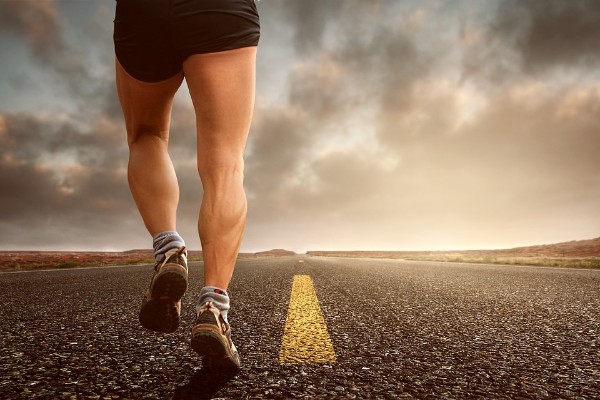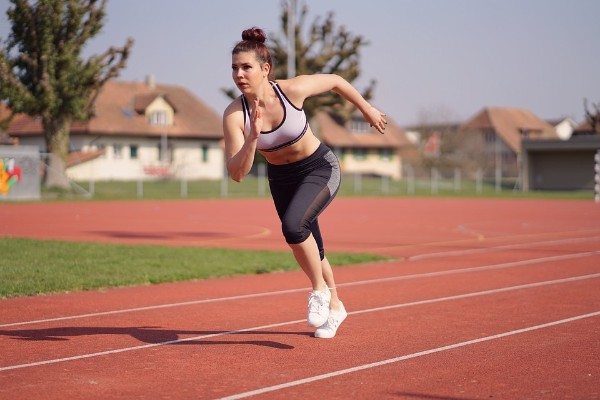Running uses your entire body, but your lower body and core muscles are the ones you use the most.
Since these essential muscles are in charge of stability, proper form, and spinal alignment—all of which aid in your ability to perform at your best and with the greatest efficiency—it’s crucial to keep them strong and healthy.
Your running form, technique, and performance may be improved if you comprehend how each muscle functions. Another way to avoid injury is to keep these muscles balanced and coordinated.
Explore the muscles used in running in more detail by reading on.
What Muscles Does Running Work?
Glutes
Whether you’re jogging slowly up the street or sprinting down a track, your glutes are an essential part of any run. According to Stonehouse, your glutes aid in accelerating your forward motion. According to him, they’re also used to maintain a stable torso and good posture, which are two essential elements of proper running form.
Certified personal trainer Secoy Reeves suggests sprinting in short bursts throughout a 10 to 15-minute run to really strengthen your glutes. Sprints cause the glute muscles to contract as you run faster. To work on your back, you could also use a treadmill and run up an incline.
Hamstrings
The three muscles that make up the hamstrings are located in the back of the thigh and are responsible for both supporting and moving the leg when the knee is bent, according to certified running coach Claire Bartholic. She advises running three to four days a week to make sure your hammies and all of your muscles get a good workout.
And no, you don’t have to go far: “Short, fast runs are better for muscle development than longer, slower runs,” According to Bartholic, if you combine this with additional weight training two to three days a week, you should notice a significant improvement in your general strength.
Quads
The quadriceps muscles come next, which, according to Reeves, are engaged as you stride forward, particularly if you’re running uphill. They are crucial for speed as well. “The stronger your quads get, the faster you will be able to run,” he says.
Calves
It will also hurt your calf muscles. When your leg is straight and bent, the calf muscles, according to Reeves, assist in lifting your heel. They also influence how your foot pushes off the ground and how you can control your running speed. Even more, the justification to work out the calf muscles on leg day.
Core
Apparently, running activates your core. In order to keep you stable and lessen the shock to your back, it tightens up as you run, according to Stonehouse. Additionally, Bartholic explains, the abs and obliques collaborate to support proper posture. Running is merely a series of hops from one foot to the next, and a strong core keeps you balanced.
Upper Body
Because your arms help propel you forward when you run (imagine the pumping motion of your arms as you move), running also strengthens the muscles in your upper body. Reeves advises that in order to maximize your workout and maintain an efficient stride, you should always keep your arms moving while running.
Hip Flexors
Since the hip flexors assist in propelling us forward, sprinters require particularly strong ones to pick up speed down the track. Four of the five muscles that make up the hip flexors are found in the pelvis.
Hip flexor overuse can lead to strain in the front of the hip, most likely the iliopsoas, so it’s important to maintain a balance of strength between them, as well as between the glutes and hamstrings. In that case, stretching a muscle that has already been overworked is ineffective, according to Pester. Instead, try to find exercises that also work the hamstrings and glutes.
Feet
Running enthusiasts might overlook their feet, which have four layers of muscle. There are ten muscles that originate in the foot alone, while a few of these start in the leg and attach to the foot.
“The foot is the first platform that needs to be stable,” Because it makes initial contact with the ground, according to Pester, it aids in our effective takeoff. Strong feet should ideally be paired with a mobile ankle, a strong knee, and mobile hips to create the ideal running form.
Our feet are unable to perform to their full potential in stabilizing the body because people frequently wear cushioned athletic shoes. However, that is not the main cause of foot injuries. The more likely culprit, according to Pester, is overly rigid ankles.

Does Running Also Work Tendons And Ligaments?
Running strengthens your tendons and ligaments, which help to absorb some of the impacts. Tendons are a type of connective tissue that connects your bones to your muscles and helps with shock absorption and smoother movement.
Your bones are joined together by ligaments, which are connective tissues. They support your body and keep it stable by absorbing some of the impact and stress from running and limiting excessive bone movement.
Importance Of Warming Up Running Muscles
Most doctors agree that you should warm up for at least five minutes before working out before proceeding to stretch. Running can shorten and tighten your muscles, which can limit your range of motion and reduce mobility.
To avoid discomfort, pain, and injury, it’s crucial to keep your muscles loose, flexible, and supple.
The Bottom Line: Keep Muscles Strong
The muscles in our glutes and hamstrings are worked when we run, which is not just a cardiovascular exercise. But running puts a lot of strain on these muscles, and injuries are frequently sustained if proper safety measures aren’t taken. In fact, injuries occur to between 40% and 50% of runners each year. The majority of this group is susceptible to repeated injuries. Because of this, it’s critical to develop balance, stability, and flexibility in the muscles we use when running.
